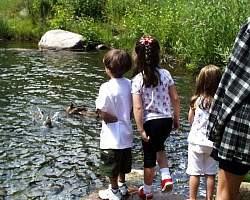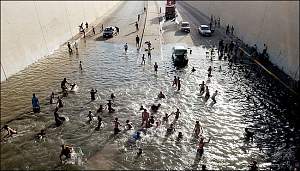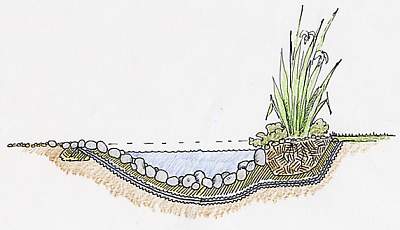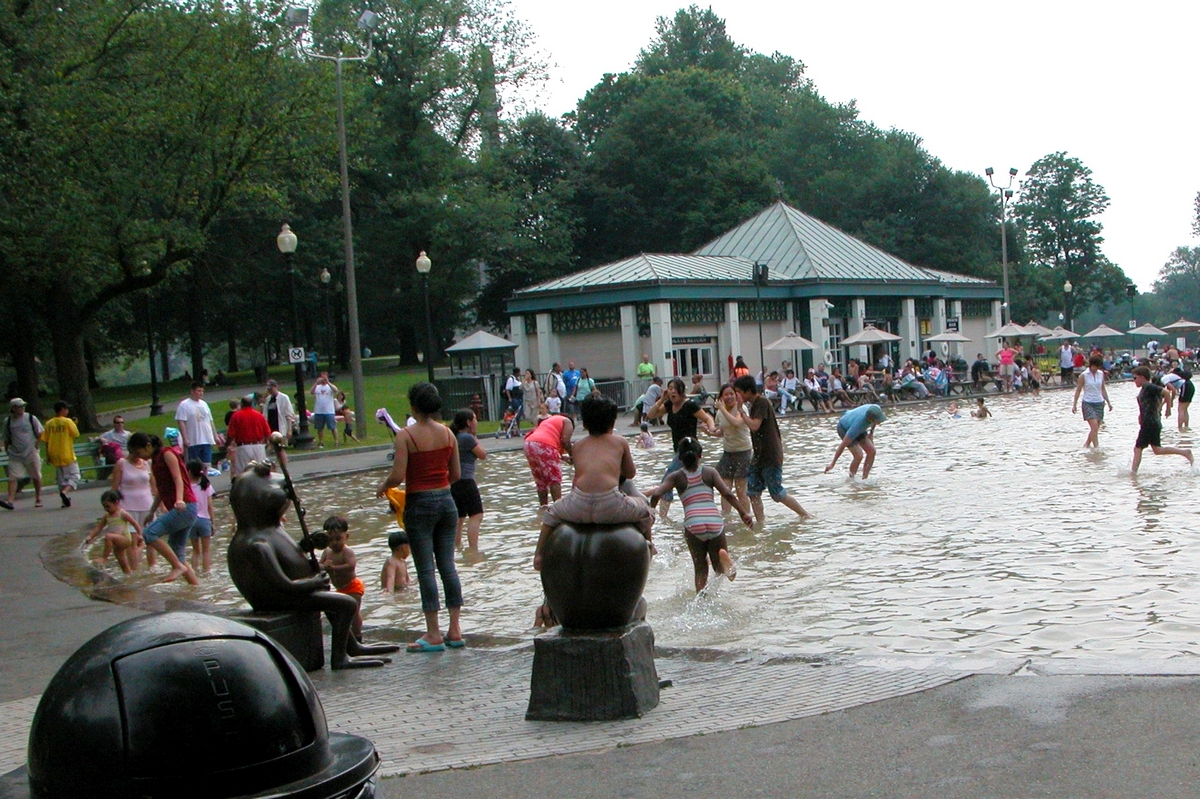The safety of children and water is potentially a controversial issue and I want to make it clear from the start that these are genuine thoughts, with genuine intent but please don’t try and hold me liable for any disasters or accidents that may befall you or your loved ones. I cannot be responsible for your life and any decisions you make on this issue are yours alone. I naturally hope and intend that only good and positive benefit can come from this writing.
Children have an almost universal fascination with water, and parents an equally almost universal fear of it, or of their children being near it. We have all heard the horror stories of children drowning in a pond, or even a shallow puddle and our hearts go out to those unfortunate few who have suffered such a fate.

Children enjoying the water
But we seem to live in a fear-driven compensation culture, which stifles creativity or adventure because of the risk of hurt. Authorities and companies cannot afford to take risks, or allow other to take them. Consequentially, more and more things get banned in the interests of public safety. The world may be safer as a result but it is certainly blander.
As a young child I would walk the suburban mile or so to school on my own, ride my bike to visit friends, play down at the dump, swim in the sea and generally have freedoms many children are not now able to experience. But creative play is an essential part of a child’s development and must be catered for somehow. A love and respect of water should be encouraged and this requires contact and familiarity with it. I believe that those most at risk are those who do not appreciate the dangers and those who are too young to.

Out of the disaster of the Iraq war, this burst water main provides a moment of joy for children and adults alike.
It is true, of course, that much of this familiarity, or lack of, will be caused by the geography of your environment. If you don’t have water in daily proximity, it is hard to become familiar with it. If you don’t see with your own eyes how a little stream can become a raging torrent after a downpour, then you will not be aware of the potential danger. Knowing the dangers brings about respect, gives us boundaries beyond which we know that things aren’t safe. In urban areas, the increasing use of WSUDs (water sensitive urban design) in the form of swales and rain gardens is a positive development.
There’s another good reason for us to have regular contact with water and that is a biophilic one. Water is a vital element, which, through modern living, we now tend to regard as no more than a right of utility. But water is the life force of the planet, and so of ourselves. Why else would we want it in our gardens? It soothes us, distracts us from our cares, puts us in touch with those deeper fundamentals of life, if we but let it. Children who experience this often can only be better off for it.

So if I’ve convinced you that it’s good for children to experience water, let’s think about how we might do so with some safety. First of all, young children should be supervised by an adult or responsible elder child, that goes without saying. I don’t advocate that you leave them alone.
I don’t know if there are any statistics available as to the ages of children that have accidents with water, but parental sense will tell us all that children under five have little comprehension of danger and must be watched very carefully, as must those of all ages with special needs. Water features should perhaps be fenced off while children are in their early years.
If there’s not much you can do about water in your wider environment, then you can perhaps create a feature in your own garden.

This drawing of a stream cross-section could also be for a small pond. Pebbles and shingle make a good base, which the children can play with. Shallow water with gentle slopes mean that if they fall over, they can stand up and climb out.
Steep sides are the most dangerous aspect of a water feature, preventing children (and animals) from being able to stand up or climb out.
Loose paving on the edges of ponds is another risk factor; use only large slabs or stones and make sure that they have only a small percentage of overhang, and are securely cemented in place. Better yet, use a pond-edge design style which doesn’t use paving in this manner at all.

A reminder of what it’s all about – fun! Don’t do this on paving which may become slippery and prevent algal build-up.
With gently sloping sides, layers of subsoil, gravel or shingle will protect the pond liner and give good grip for feet and hands – bare liner tends to be slippery and is more vulnerable to damage. Good construction helps all round, although that is not the subject of this article. If you have an overhanging deck, make sure the water is not too deep at this point and that children can’t get trapped underneath it. Metal or plastic grids can also be built into a pond, sitting just below the water level. These need careful thought as to their siting as they must take the weight of a person without breaking. The danger is these can look very industrial.
As a final thought, if you want moving water but don’t want the depth of a pond, consider a stream garden, where water just flows along a shallow water-course. There is no pond as such and the water just disappears underground into a hidden sump tank, which houses the pump and which is inaccessible..

This stream feature is used by children – the water barely laps their ankles. Stones are moved, small dams made…
In conclusion, there are many things that children learn from playing with water: self confidence, balance, awareness of danger, responsibility, experience of wildlife and of Nature’s rhythms. A careful and reasoned approach is what is required for allow a child safe, creative exploration.
And of course, we adults are all children at heart, too. Play safe.
First published in 2009, updated 2019

